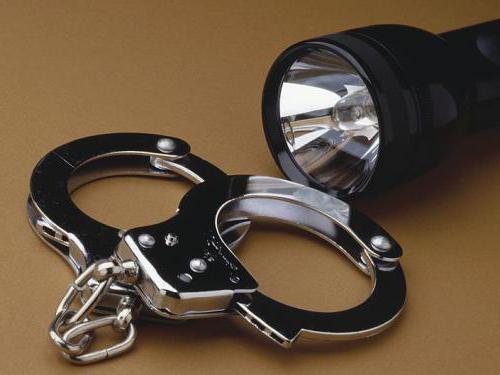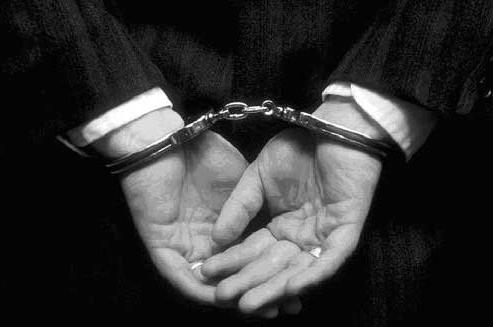What is banditry? According to Art. 209 of the Criminal Code is the creation of an armed group that attacks citizens or organizations. Crime refers to the category of especially serious. What is a gang? What factors influence the occurrence of organized crime? And what penalties are provided for by Art. 209 of the Criminal Code? The answers to these and other questions are presented in the article.
Definition
In Russian, the word "gang" appeared after the Polish uprising of 1863. Later, the concept entered legal terminology. In everyday speech, this word was understood differently at different times. For example, gangs called the White Guards groups consisting of red rebels. And during the Second World War, the German occupiers used this term in relation to the Soviet partisans.
In criminal law, the concepts of “gang” and “armed group” (which, in essence, are synonyms), like others, are given a clear and comprehensive definition. What is said in Art. 209? A gang is a criminal association whose purpose is the unlawful seizure of another's property. About what punishment for such an act is provided for in the legislation, is described below.

Banditry (Article 209 of the Criminal Code of the Russian Federation): objects
The activities of armed groups are considered especially dangerous because, as a rule, their members inflict serious harm on citizens and public order in order to fulfill their goals. The objects of banditry (Article 209 of the Criminal Code of the Russian Federation) are many.
The rights and freedoms of citizens, their property, the normal activities of individual organizations, enterprises and institutions suffer from the actions of a criminal group.
Corpus delicti
Art. 209 of the Criminal Code can be incriminated to a person or group of people not only after the commission of an armed attack. The aforementioned criminal article deals with the creation of a gang. And the organization of a criminal group includes the search for accomplices, collusion, and training of participants, and the provision of weapons, transport or premises.
A group of people who have decided to rob a bank can be convicted under article 209 if they have acquired weapons, discussed a plan of action, and taken a number of other steps to implement their criminal plan. And even if they failed to implement this plan.
In any case, the creation of a group is a complete crime. Regardless of whether the planned act has been implemented. But if the process of creating a gang was not completed for reasons independent of its members, their actions are qualified as an attempt to create an armed group.

Gang leader
In films, books and crime news, the phrase “head of a gang” is often found. What does it mean? Not only the creation, but also the leadership of the armed group is mentioned in the first part and art. 209 of the Criminal Code. In the comments to the criminal article, you can get more detailed information. And above all, to decipher the meaning of basic concepts. So, for what actions a person may be charged with Art. 209 of the Criminal Code?
Gang leadership is the adoption of new members, the development of security measures for a group, the punishment of violators of a criminal organization, and the preparation of an attack plan. Art. 209 of the Criminal Code provides for such acts restriction of freedom for a period of 10 to 15 years with a fine in the amount of one million.
The criminal activity in the group is planned mainly by the head. He develops various ways of committing theft of property, selects potential victims, searches for vehicles, distributes the roles and responsibilities of gang members, who, of course, take part in all this criminal activity.

Gang membership
For this crime, article 209 provides for punishment from 8 to 15 years with a fine of a million. Participation in an armed group is any action that contributes to the implementation of the plans of a particular criminal organization whose activities are aimed at preparing an attack.
Banditry can be called the collusion of two or more persons. Mandatory sign of the crime, which is discussed in article 209, is armament. In this case, the group is recognized as armed in the presence of firearms, cold weapons and any other weapons of at least one of the participants.

Example
A group of people is preparing to rob a business. At the same time, gang members do not acquire real weapons to implement their plans, but only objects imitating them. Regardless of whether they managed to complete the criminal case or not, they will be charged with article 209.
The specific goals of the criminals are not indicated in the comments. This can be not only the seizure of another's property, but also rape, and extortion, and damage to another's property.

Subject of crime
Under article 209, a person over the age of sixteen may be brought in, whose sanity is proven. Suppose an armed group consists of only two people. But one of them did not reach the age of sixteen. In this case, the criminal organization cannot be qualified as a gang. And the acts committed by a criminal who has reached sixteen years of age will be considered in the context of another criminal article.
The third part of article 209 already refers to a crime committed by a person using his official position. The punishment is from twelve years in prison. This refers to the use of uniforms, paraphernalia, service weapons or identity cards.
If the purpose of the criminal group is an armed attack on a commercial facility, and one of its members is an employee of this enterprise and resortes to any official equipment to implement the plan, he will be convicted under the third part of Article 209.
Banditry and robbery
What is the difference between these concepts? Both banditry and robbery require weapons. In both the first and second cases, criminals encroach on the rights of citizens. But robbery can also be blamed on one person who has taken possession of other people's property with the use of violence. About what banditry is said above. And as already mentioned, under Article 209, a group of persons can be convicted even if the seizure of property or other goals have not been achieved.
Do not confuse banditry with an encroachment on a statesman. About this crime and punishment for it is said in article two hundred and ten. An attack on a public or statesman, as well as armed rebellion and sabotage, pursue political goals.
Crime community and gang

What is the difference between these concepts? Under the criminal community understand the group created to commit serious crimes. It can also be an association of organized groups. The gang differs from the criminal community primarily in that it is characterized by stability. This is one of the signs of the crime of Art. 209. Cohesion is characterized by cohesion.
In other words, a gang is created to commit one or more crimes. Community is a more global concept. Such a grouping is a more complex phenomenon in the criminal world: both in the number of participants and in the time of existence.
There are other important differences. The criminal community does not have a sign of armament. And finally, the organization of the criminal community is a serious and especially serious crime.
From the history
When did the first stable armed groups appear? Banditry in Russia has a long history. Factors affecting its development are the ineffective struggle of law enforcement agencies and the low level of well-being of citizens.
In the post-revolutionary time, banditry was attributed to state crimes. Later this concept acquired a slightly different shade. The actions of members of such groups were regarded as actions directed against the new government, which often was so.
In the postwar years, small armed bandit groups began to appear, carrying out attacks on citizens, food bases and shops. Gangs of the 90s are a special topic.

Organized crime in the 90s
After the collapse of the Soviet Union, crime rates dramatically increased. This was caused by the general instability in the country, as well as the fact that a certain layer of society acquired the opportunity to earn illegally.
Gangs in the 90s appeared like mushrooms after rain. Enterprises burst one after another, unemployment grew in the country. Organized crime, meanwhile, was in its prime. Criminal communities shared power among themselves, which was usually accompanied by bloodshed. The fight against banditry in the early nineties was practically not conducted.
There was such a thing as a “Russian mafia,” which for some reason did not have a negative connotation, but even, on the contrary, was romantic, which, of course, was promoted by mass cinema. What remained for those who were not members of such communities, but sought to get rich in the shortest possible time?
There was no work, as already mentioned, in the nineties for Russian citizens. Even for doctors of science and highly qualified specialists. What can we say about young people who are not burdened with thoughts about the moral side of the crime, which in a matter of hours can bring an impressive jackpot? Hence the emergence of a new concept - racketeering. However, the first representatives of this type of banditry appeared in the late seventies of the last century.
An increasing part of the population was involved in criminal activity every year. The public danger also increased. In the last decade of the twentieth century, the rule of law system was not able to withstand the pressure of bandits. The highest crime rate occurred in 1992-1993.
In the mid-nineties, the number of recorded crimes became slightly lower. However, a fairly large number of acts remained hidden from accounting. Crime declined somewhat with the adoption of the new Code of Criminal Procedure. Crime detection rates for articles 209 and 210 in the late nineties began to grow. In 1997, 374 such acts were disclosed. In 1999, one and a half times more. However, it is impossible to say how many criminals went unpunished.
If we talk about the 2000s, the number of recorded crimes under the article on banditry was in 2004-2005. Today, the crime rate in Russia remains at a high level. In addition, there are many criminal gangs from other states in the country: from the former republics of the USSR, Afghanistan, Vietnam, China and so on.